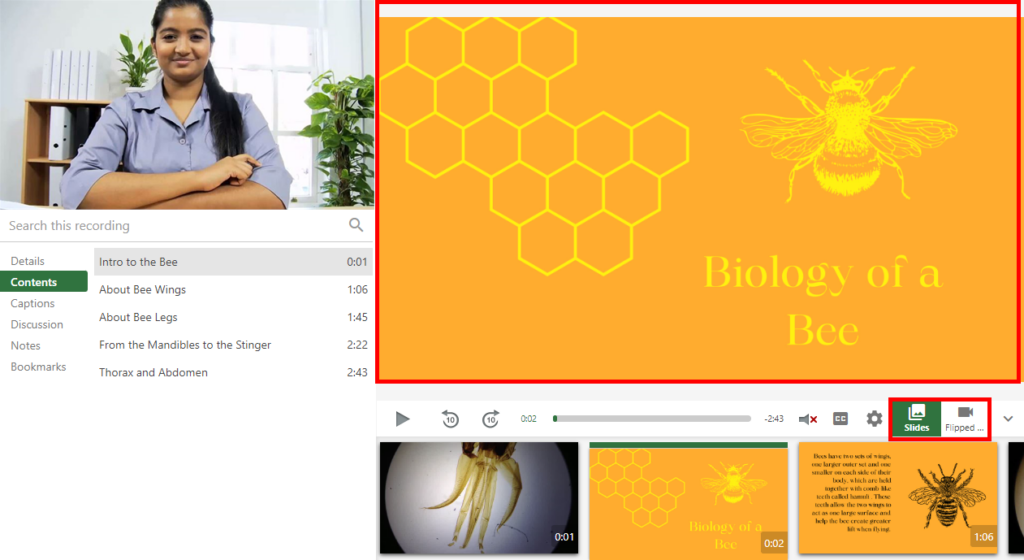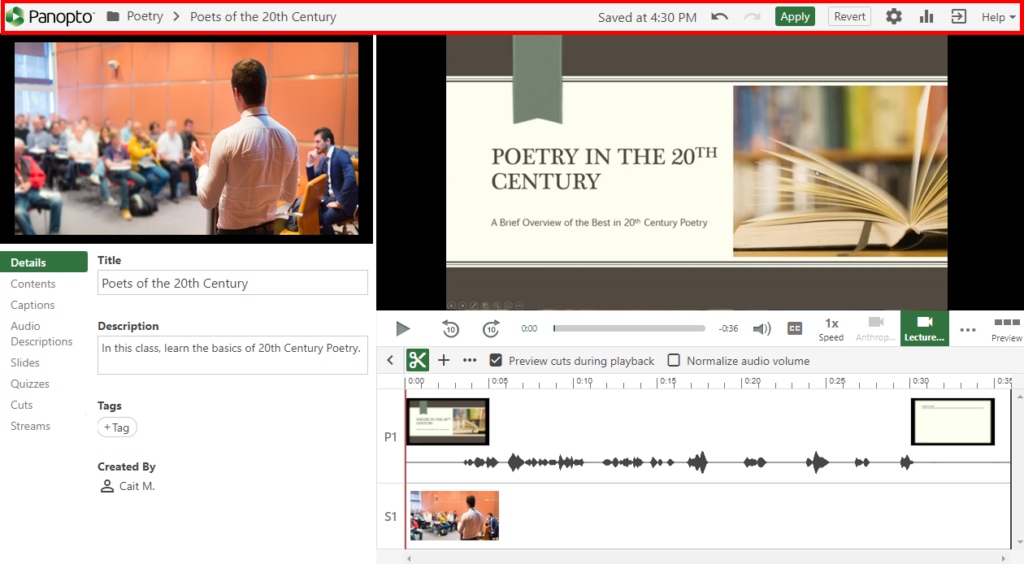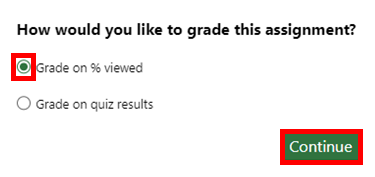Learn about features of Panopto and how you can use them to create engaging instructional videos for your students.
In the coming months, Ball State will be adopting Panopto as our video platform. As we all work together to learn Panopto, I wanted to share a few highlights of Panopto features that will help you make engaging teaching videos.
Multiple Streams
One of the core features of Panopto that makes it stand out is the ability to record and view multiple sources (called “Streams” in Panopto). Every video has a Primary Stream (typically, the presenter’s video) and can have multiple Secondary Streams (typically, supplemental materials such as slides). For example, you could record yourself talking, a PowerPoint presentation, a website you are demonstrating, and a document camera, all at the same time.
In the Panopto video viewer, the Primary Stream will be displayed in the upper-left corner, with the first Secondary Stream in larger view on the right. Viewers can toggle between multiple Secondary Streams and swap where the Primary and Secondary Streams appear.

Multiple streams allow faculty creating instructional videos to enrich those videos with supplemental content that helps illustrate the concepts for learners. As we’ll see shortly, these streams also help make video editing easier and more flexible.
Panopto Video Editor
When creating instructional videos, I often find that about half of my time goes toward editing the videos. The Panopto video editor makes this process quick and easy. The editor is non-destructive, meaning that any changes you make can be reverted. For example, if you cut the beginning of your video, the entire video will remain in the editor and the cut can be removed at any time.
The video editor makes it easy to cut parts of the video, including individual Streams. For example, if you want to stop sharing your slides during part of the video, you can cut only that Stream. You can add in new Streams, other Panopto videos, and YouTube videos.

You can also embed a webpage with the Panopto video editor. Embedding a webpage will pause your video at the location you embed it, then users can browse the webpage before returning to the video. This can be helpful if you want your students to interact with web content as part of your video.
Finally, you can add a quiz to your video, then pass the results of that quiz to a Canvas assignment. Available quiz question types include True/False, Multiple Choice, Multiple Select, and Fill in the Blank.
Setting a Panopto Video as a Canvas Assignment
You can put hours of energy into creating engaging instructional videos, but those videos will only be impactful if your students actually watch them.
One exciting feature of Panopto is the ability to set watching a Panopto video as its own Canvas assignment, letting you automatically assign points to students based on how much of a given video they watched.

This feature only recognizes the time played on the video, so students cannot just scrub to the end of the video. Add a quiz question partway through the video, which will pause the video for the student to answer, and you can work to ensure your students are watching your videos and getting credit for watching them.
Creating a Video Assignments in Canvas
In addition to assigning students to watch a video and get points, you can assign students to create their own Panopto videos as the assignment submission.
After a student records and submits the video, it will no longer be editable, so you don’t need to worry about students changing the video later. You can learn more about how this process works for students.
Discussions, Notes, and Bookmarks
You can use Panopto to encourage rich student engagement with your videos through three features:
- Discussions: With Discussions, your students can ask clarifying questions attached to a specific timestamp in the video.
- Notes: With Notes, your students can take notes about your video and review those notes alongside specific parts of the video.
- Bookmarks: With Bookmarks, your students can identify parts of the video to return to later and rewatch.
Conclusion
Panopto is currently available for use in Ball State’s Canvas, and it will become the only available video platform for Ball State beginning in Spring 2025. Stay tuned for more Teaching Innovation Blog posts about Panopto, including the much-requested quiz feature.
As you create and share videos with Panopto, I would love to hear about your experiences and how you are finding pedagogical applications for the tool. Please feel free to share your thoughts in the comments below.
For more information on Panopto, visit the Panopto FAQ page.



Comments: